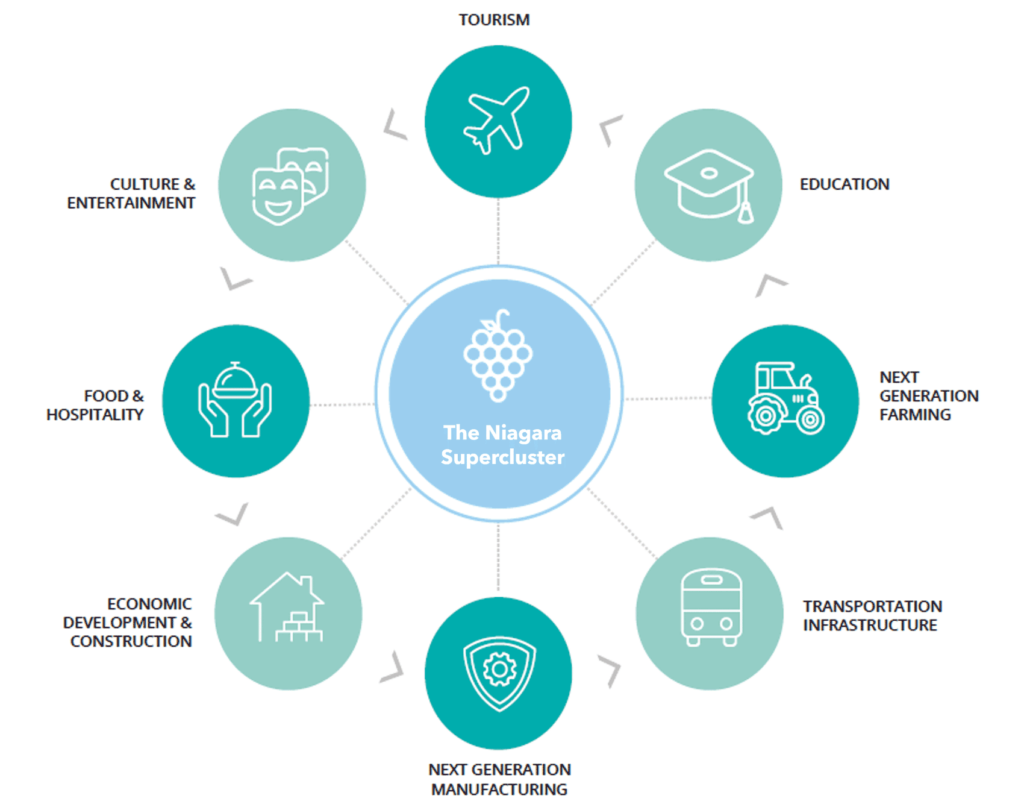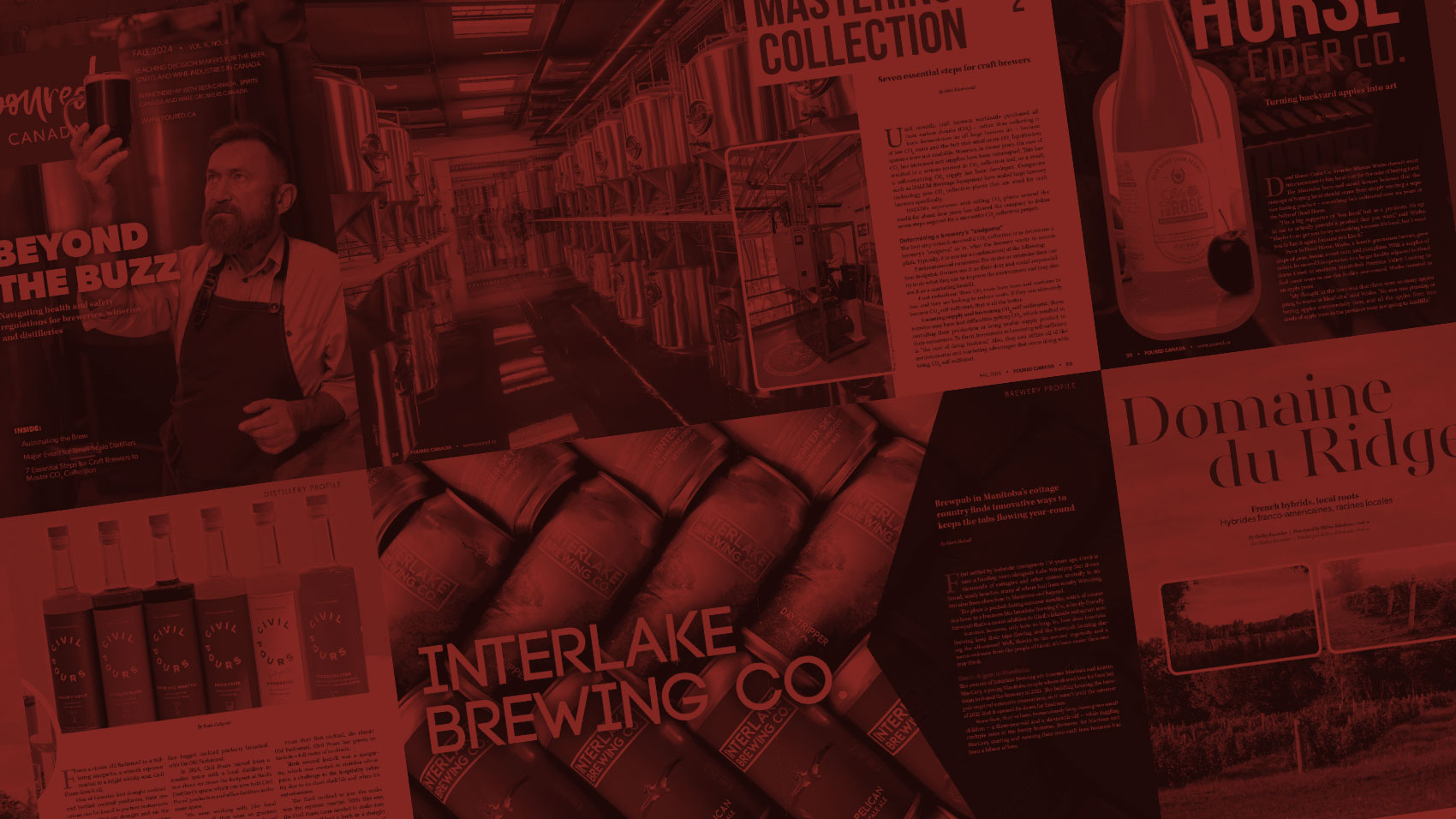At the heart of the world’s leading tourism economies, such as France, Italy, California and Australia, resides a prosperous wine industry that’s surrounded by a bevy of dining, entertainment and cultural amenities. These connected offerings all work together to offer truly unique experiences that make travelling around the world to see them first-hand a worthwhile decision.
What many people don’t realize is that, within the world’s premier wine regions, the wine industry operates as the catalyst upon which economic fortunes rise and fall.
This is because wine industries serve as magnets for investment due to their ability to create and connect economic clusters of industries that thrive in their presence. Clusters are areas of intense economic activity made up of companies, academic institutions and non-profit organizations that boost innovation and growth in a particular industry.
All around the world, wine industries serve as the tide that can lift their local economies, providing an economic uplift to the industries that often cluster around them, which include transportation infrastructure, post-secondary education, housing and development, advanced manufacturing, farming and agriculture, tourism, food and hospitality, and culture and entertainment.

The range of climates and topographies that are required to grow grapes for premium-quality wine are so specific that only 0.53 per cent of the world’s arable land is used for vineyards. Coupled with the long-term investment horizon associated with winemaking (for example, it takes three years for a newly planted vine to become commercially productive), wine industries are effectively fixed in the regions in which they reside. Unlike automobile manufacturers, which can relocate production facilities with relative ease, when wine producers invest capital into their operations in the form of newly planted vines or winemaking facilities, those investments remain in the region for decades.
When people travel to places like Italy and France, it’s well understood by those countries that tourists are visiting to experience their wine, food and culture. As the wine industry grows, so does the number of restaurants and experiential offerings in the surrounding area. This growth, in turn, fuels more tourism and innovation, enabling wine producers to scale up their operations and increasingly hire the specialized workers needed for wine production.
The need for specialized labour then sparks the demand for industry-specific programs at post-secondary institutions, along with transportation infrastructure to facilitate more traffic to the region, and the development of housing for those who relocate to the area to live and work. On and on, this cycle of economic development goes, reaching its zenith when the private and public sectors within the cluster begin to collaborate on a holistic strategy for economic growth. With every industry in the cluster working in concert, the effect of the cluster intensifies, further accelerating the economic growth of the region.
What many people don’t realize is that, within the world’s premier wine regions, the wine industry operates as the catalyst upon which economic fortunes rise and fall.
This cluster concept had long been tacitly understood within Ontario’s wine industry. However, it wasn’t until this past year that it was credibly validated. Key leaders from across Ontario’s wine sector, including Wine Growers Ontario (WGO), Ontario Craft Wineries (OCW) and Tourism Partnership of Niagara, joined forces to partner with Deloitte on the development of an economic impact study titled The Niagara Cluster: Ontario’s Untapped Economic Engine to model and understand the growth drivers behind the world’s leading wine economies and how they could best be leveraged in Ontario.
In addition to the rare presence of farmland that’s suitable for vineyards, the Deloitte report’s global scan identified several other critical conditions that must be present for a wine region to thrive to the point where an economic cluster will develop around it. Referred to as “global best practices,” these conditions from the world’s premier wine regions include:
- Domestic wines maintaining a dominant market share position compared to foreign wines.
- A connected strategy between the wine and tourism industries that enables the development of world-class tourism offerings.
- Tax policies that incentivize investment into the wine sector.
- Capital support programs that incentivize investment into the agriculture and hospitality sectors.
“The most successful wine and tourism regions around the world are investing capital and growing their domestic share because their domestic industry is a priority and is supported by policies that incentivize investment,” said Paul Speck, president of Henry of Pelham Family Estate Winery and OCW member.
“Ontario wines already compete and win on the global stage, so working together to turn Niagara into a world-class wine and tourism region to drive significant economic growth is within reach.”
John Peller, Andrew Peller Ltd.
In Ontario, the wine industry is on the precipice of transformational growth, but greater support is needed from the provincial government for this potential to be realized. For example, Ontario is the most heavily-taxed wine-producing jurisdiction in the world and is subject to tax policies that are not observed in any other wine producing region. This includes British Columbia, Canada’s other major wine-producing region. Just as critically, as opposed to championing local products, the policies that govern how alcohol is retailed in Ontario work to provide foreign wine producers with competitive advantages over domestic producers, making it more difficult for Ontario’s wineries to win in their own backyard.
“Ontario wines already compete and win on the global stage, so working together to turn Niagara into a world-class wine and tourism region to drive significant economic growth is within reach,” said John Peller, president of Andrew Peller Ltd. and WGO member. “What’s required are supporting policies and best practices that both B.C. and leading global wine regions adhere to and where Ontario needs to catch-up.”
Although there are interconnected pockets of wine-producing regions across southern Ontario, the vast majority of grape growing and wine production takes place in the region of Niagara, hence the title of the Deloitte report. As stated in the Deloitte report, should Ontario’s government work together with the wine industry to develop and enact the policy support that’s desperately needed for it to reach its full potential, the Niagara Cluster stands to benefit from an economic uplift of $8 billion in a single generation. As seen from the world’s leading wine regions, $8 billion is merely scratching the surface.




